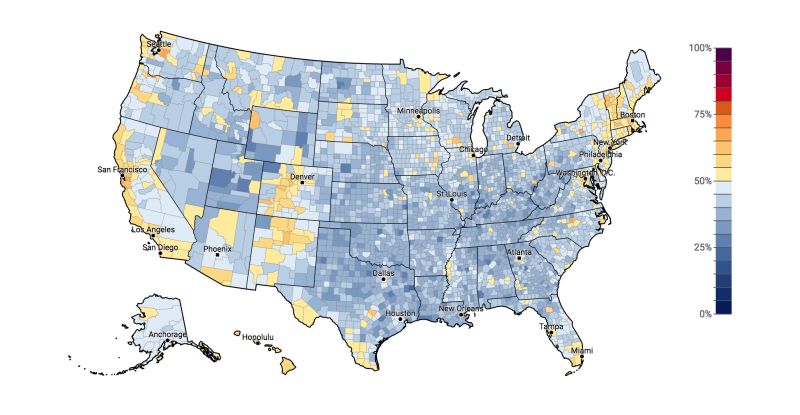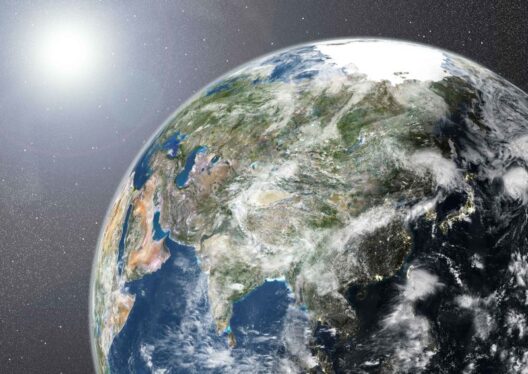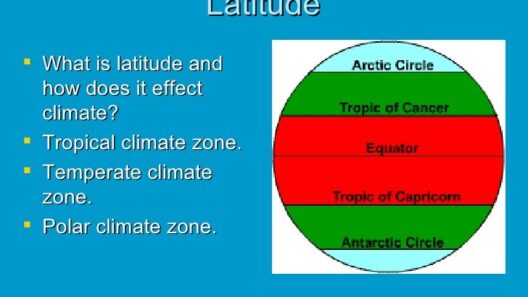In a world increasingly defined by its tumultuous relationship with the climate, the concept of “climate confusion” looms larger than ever. It permeates societal discourse, skews public perception, and manifests in the everyday decisions of individuals across the globe. But how many people still do not believe that climate change is a pressing issue? This question beckons us to traverse the intricate landscape of belief systems, misinformation, and the psychological factors influencing public opinion regarding one of the most critical dilemmas of our time.
The Landscape of Belief: A Vortex of Misinformation
To comprehend the extent of climate confusion, it is imperative to recognize the vortex of misinformation swirling around this subject. Information today is omnipresent—yet, paradoxically, clarity is often drowned in a cacophony of conflicting messages. On one side, the irrefutable scientific consensus underscores that climate change is primarily driven by human activity, specifically the combustion of fossil fuels and deforestation. Conversely, a persistent minority insists on negating this undeniable reality, relying on selective interpretations of data, misrepresentation of scientific findings, or outright denial.
This divergence generates a profound polarization in public belief. Some individuals are crusaders for climate action, galvanized by the dire warnings encapsulated in reports from the Intergovernmental Panel on Climate Change (IPCC) and other authoritative bodies. Others, however, remain entrenched in disbelief, often perceiving climate change as an exaggerated narrative concocted by a cabal of scientists and activists. The metaphor of a chasm separates these two factions—one side illuminated by evidence and rationale, while the other lurks in the shadows, shrouded in skepticism and misinformation.
The Psychological Underpinnings: Fear and Cognitive Dissonance
The psychological dimensions of climate confusion warrant careful examination. Humans are inherently resistant to complex, uncomfortable truths, leading to the phenomenon known as cognitive dissonance. When confronted with alarming predictions regarding climate change—rising sea levels, extreme weather patterns, and ecosystem collapse—individuals may experience a visceral reaction. To reconcile this discomfort, some choose to deny the validity of the information altogether. It’s akin to a ship navigating through treacherous waters; rather than acknowledging the storm, some captains decide to ignore the warning signs, opting instead for the illusion of calm seas.
Moreover, the concept of mortality salience—an awareness of one’s own susceptibility to existential threats—may further exacerbate climate confusion. The acknowledgment that climate change could jeopardize future generations introduces an element of anxiety that many find unbearable. This anxiety acts as a barrier, displacing the urgency of climate action into the domain of denial and avoidance.
Socioeconomic Factors: The Influence of Class and Ideology
Compounding the issue are socioeconomic factors that influence belief and engagement with climate change. Often, individuals from affluent backgrounds have greater access to information, education, and resources to engage in climate activism. Conversely, disadvantaged communities may prioritize immediate economic concerns over environmental issues, leading to a reluctance to embrace climate science. Imagine an artist standing before a canvas—those with access to a full palette of colors can create vibrant landscapes, while others, limited by circumstance, can only paint in shades of gray, unable to envision the broader picture.
Furthermore, ideological beliefs deeply entwined with political identities can skew perceptions. In some regions, acknowledging climate change has become synonymous with allegiance to certain political ideologies. Thus, for a segment of the population, disbelief can be a form of political expression, wrapped in layers of identity and loyalty. This intertwining of ideology and climate belief fosters an environment where rational discourse can be overshadowed by factionalism.
The Role of Media: Harbingers of Truth or Confusion?
The media landscape plays a pivotal role in shaping public perception. In an age where news is often sensationalized, the portrayal of climate change can oscillate between urgent calls to action and trivialization. Indeed, the framing of climate-related news—through metaphors of catastrophe or as mere variations in weather—can evoke vastly different emotional responses. This duality is akin to a skilled magician who can manipulate perception; just as an audience may be led to believe in the impossible, so too can media narratives either illuminate the reality of climate change or obfuscate its urgency.
Some platforms deliberately propagate skepticism, using cherry-picked data and polarizing rhetoric to sway public opinion. This misleading information often masquerades as debate, fostering an environment where confusion reigns supreme. Consequently, the discerning individual must navigate this labyrinth of content with acute skepticism, as misinformation obscures the path toward truth.
The Road Ahead: Cultivating Awareness and Understanding
Despite the prevailing confusion, there is a glimmer of hope. Educational initiatives and grassroots movements have emerged, aiming to demystify climate science and foster a deeper understanding of the issues at hand. It is imperative to cultivate awareness rooted in empathy and understanding to combat climate confusion. This requires an inclusive dialogue that respects diverse perspectives while emphasizing the irrefutable scientific truth behind climate change.
In conclusion, climate confusion is not merely an abstract phenomenon; it represents real-world ramifications for ecological and societal well-being. The chasm between belief and disbelief reflects deeper psychological, social, and economic currents. The path to unity in combating climate change necessitates a concerted effort to dispel misinformation, engage in meaningful conversations, and elevate the discourse to the imperative that this global crisis demands. As we navigate these turbulent waters, let us work collectively to transform confusion into clarity—turning disbelief into informed action for the sake of our planet and future generations.







